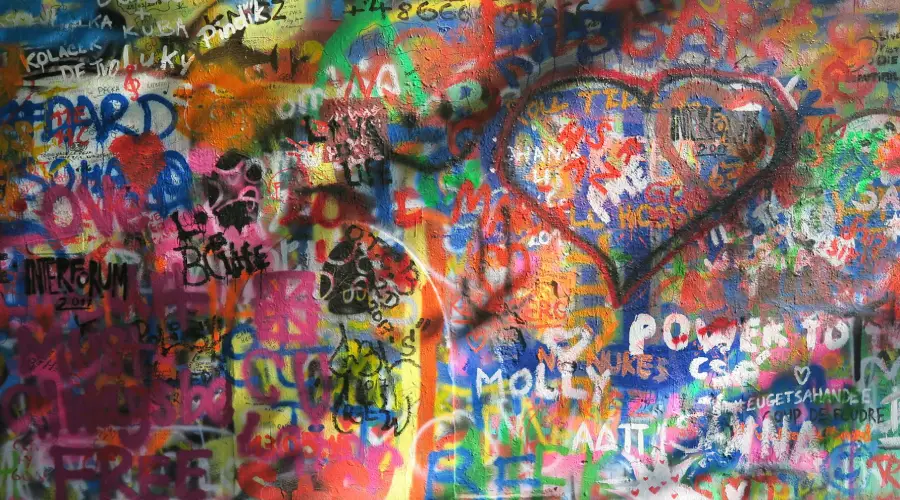Top things to do in Prague
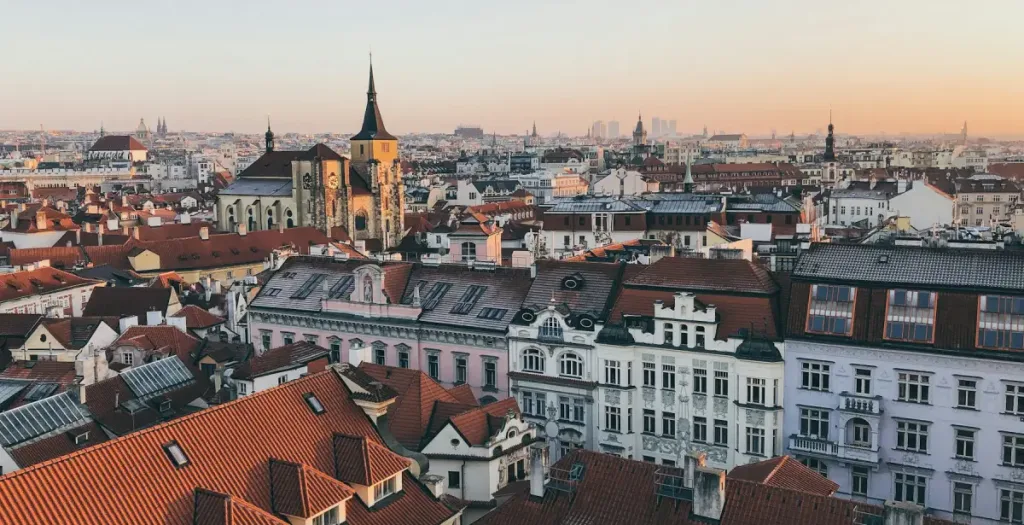
- Exploring Prague on Foot: A Guided Journey through History
- Vysehrad: Prague's Historic Citadel
- The Dance of Architecture - Prague's Dancing House
- Explore Historic Libraries: Embark on a Literary Journey Through Time
- Navigating Beauty: River Cruise in Prague
- Villa Tugendhat: A Modernist Masterpiece in Brno
- Museum Kampa: Where Art and Nature Converge on Prague's Riverside
- St. Nicholas Church: A Baroque Masterpiece in the Heart of Prague
- National Monument: Celebrating Czech Heritage and History
- Lennon Wall: A Living Mural of Peace and Expression in Prague
Prague, the charming capital of the Czech Republic, is a historical and culturally rich city. Prague, a European treasure hidden behind the Vltava River, is well-known for its magnificent architecture, cobblestone streets, and the famous Prague Castle, which dominates the skyline. As one ambles through the picturesque areas, each delivering a variety of activities, Prague’s ancient-world allure is apparent.The architecture of Prague’s historic core, acknowledged as a UNESCO World Heritage site, blends Gothic, Baroque, and Romanesque styles. The sculpture-filled Charles Bridge, offering astounding views of the city, is proof of the medieval history of the city. The Astronomical Clock in the Old Town Square captivates tourists with its intricate design and hourly performances.
Prague boasts a flourishing cultural scene alongside its impressive architecture. The city is a haven for art enthusiasts, with numerous theaters, museums, and galleries. The vibrant street markets are another locale where locals and visitors can relish the animated ambiance while indulging in traditional Czech foods and handmade goods. For those seeking a captivating European experience, Prague is an essential destination due to its amiable people and diverse cultural offerings. For those pondering what to do in Prague, the city provides a myriad of choices, including exploring ancient sites, savoring delectable cuisine, and immersing oneself in the artistic atmosphere. Prague assures an extraordinary journey through time and culture.
Exploring Prague on Foot: A Guided Journey through History
Embarking on a strolling expedition in Prague unveils a captivating journey through the city’s prominent structures and centuries of history. Prague’s elaborate cobblestone pathways intricately weave a tapestry of the city’s past, offering guests a comprehensive synopsis of what awaits them. During a stroll tour of Prague, one must traverse the renowned Charles Bridge, stretching across the Vltava River and providing panoramic views of Prague Castle. This celebrated bridge stands as an emblem of the city’s enchanting skyline, and its cobblestone promenade reveals a visual banquet of splendid structures.
Commencing the promenade at the nucleus of Prague’s Old Town Square, visitors encounter the celestial timepiece’s captivating tales and the Gothic steeples of the Tyn Church, transporting them to a past epoch of medieval splendor. The square’s elaborate labyrinth of cobblestone lanes unveils alternative facets of Prague’s history with each stride. Wenceslas Square offers a vibrant experience with its lively ambiance, colorful markets, and the vitality of contemporary Prague. Exploring this historic square allows one to witness Prague’s distinct fusion of tradition and modernity, offering insights into the city’s many offerings and cultural development.
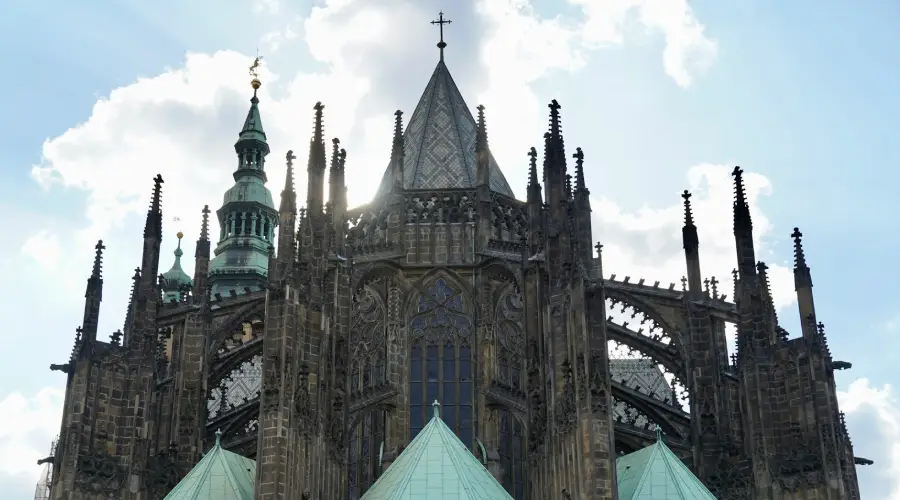
Vysehrad: Prague’s Historic Citadel
Standing proudly on a craggy headland with a commanding perspective of the Vltava River’s winding path, Vysehrad is a living example of Prague’s rich architectural history and diversity. This revered location in Prague, which dates back to the tenth century, highlights the city’s skyline and invites visitors to go on an enthralling trip through Czech history. As one enters the hallowed grounds of Vysehrad, one is met with a sequence of strongholds embellished with Gothic-style structures, historic walls, and charming gardens. The enduring allure of this location provides valuable insights into the evolution of the city’s architecture across the ages.
Climbing to the summit of the craggy hill, explorers are welcomed to Vysehrad Castle, where Gothic fortifications and inner yards offer a captivating glimpse into Prague’s medieval history. As a sentinel, the fortress lets visitors follow in the footsteps of the past and take in the imposing structures that have endured the test of time. Tucked within the fortress’s protective embrace, Vysehrad Cemetery reveals a darkly intriguing side to the place. The cemetery, which is the last resting place for well-known Czechs, gives Vysehrad’s story a sad touch and offers a unique viewpoint on the nation’s rich historical and cultural legacy.
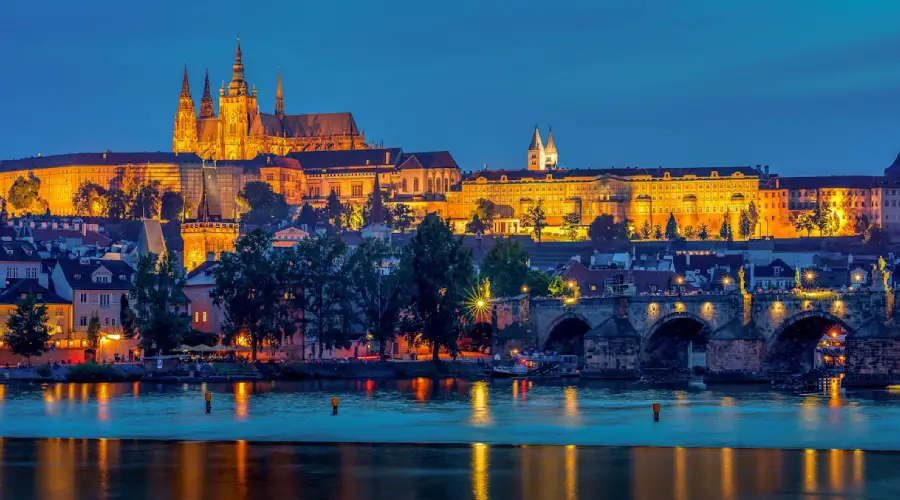
The Dance of Architecture – Prague’s Dancing House
Situated in the center of Prague, the Dancing House is a well-known landmark in the city and an example of forward-thinking modern design. Called ‘Fred and Ginger‘ because of its colorful, flowing style that subtly mimics a dancing couple, this landmark building defies convention and gives the cityscape a decidedly contemporary vibe. The Dancing House, designed by Frank Gehry and Vlado Milunić, was finished in 1996 and has since come to represent Prague’s acceptance of creative architectural expression. Its unique arching shape sets it apart from the neighboring traditional buildings, producing a striking visual display that draws in both locals and tourists.
The title ‘Fred and Ginger‘ honors the iconic dance pair of Fred Astaire and Ginger Rogers, drawing inspiration from the dynamic and rhythmic architecture. Reminiscent of the couple’s elegant dances, the Dancing House’s flowing façade and whimsical design accentuate the vibrant life of the arts by creating a sense of motion and cadence. The Dancing House comes to life as the sun sets, its distinctive shape glistening against the skyline of Prague. This architectural masterpiece adds a noteworthy chapter to the story of the Dancing House architect and inspires spectators to recognise the beauty of architecture that defies convention.
The Dancing House, with its dynamic construction housing many office spaces, a restaurant, and an art gallery, adds to the area’s cultural life. This multipurpose area showcases a tasteful fusion of modern architecture with cultural relevance, adding to Prague’s diverse character.
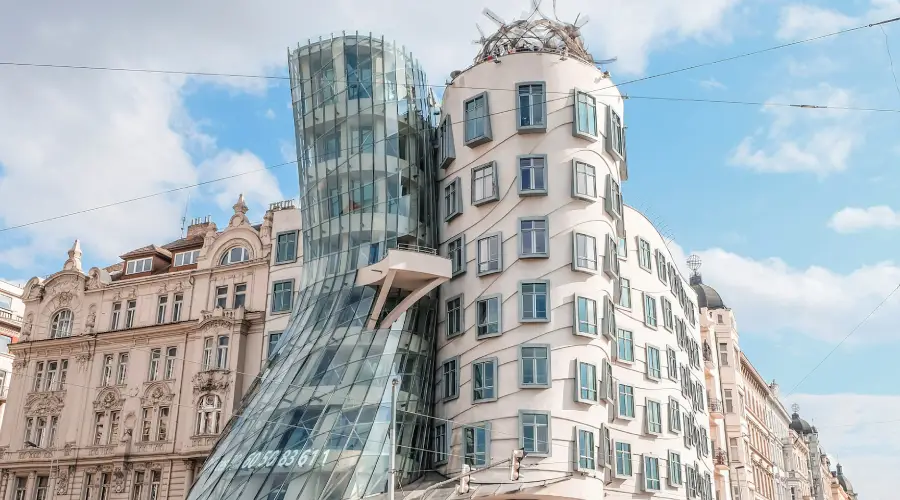
Explore Historic Libraries: Embark on a Literary Journey Through Time
Explore the rich tapestry of Czech literature and set out on an enthralling adventure into the magical world of Prague’s libraries. The echo of earlier times can be heard inside the pages of antique books and valuable manuscripts. These informational holdings not only give us a lasting link to our common past, but they also present a rare chance to see how human intelligence and creativity have developed throughout time. Prague is home to several architectural gems, one of which is the magnificent library housed in the Baroque-style Klementinum. Experience the splendor of its large, fresco-adorned rooms as this historic archive tells the stories of centuries’ worth of scholarly endeavors.
Enter the Strahov Library, a classic haven tucked away in the center of Prague. Renowned for its collection of rare manuscripts and philosophical treasures, the library invites visitors to witness the intellectual exchange spanning multiple ages within its meticulously maintained walls. Explore the National Library of the Czech Republic, a modern citadel seamlessly blending modernism with a rich historical backdrop. This hub of creativity and intellect houses diverse collections, serving as a living conduit between the past and the present, ensuring the continuous narrative of our collective knowledge.
Navigating Beauty: River Cruise in Prague
Taking a riverboat excursion in Prague is a magical experience that offers a unique viewpoint of the city’s grandeur. The famous Vltava River winds through the center of Prague, the Czech capital, providing fascinating views of the city skyline and famous sites. This water experience guarantees breathtaking views of Prague together with visual splendor, cultural immersion, and culinary delights. A vessel journey on the Vltava River offers an intimate gaze at Prague’s architectural gems, forming an enchanting panorama framed by the riverbank exteriors reflecting centuries of history, the exquisite arches of Charles Bridge, and the silhouette of Prague Castle against the dusk sky. The Vltava cruise becomes a living picture that tells the tale of the city, immortalized in the compositions of Czech artists such as Smetana.
For a holistic experience, enjoy a dinner cruise across Prague that seamlessly combines superb meals with stunning scenery. Drawing inspiration from Czech culinary customs, these river cruises provide an elegant dining experience amidst the shimmering city lights along the riverbanks. Indulging in delectable cuisine and unwinding on the Vltava enhance Prague’s romantic ambiance at night. A boat tour in Prague offers an all-encompassing overview, revealing the city’s facets from a unique viewpoint. Witness the picturesque Kampa Island, glide beneath the arches of Charles Bridge, and discover hidden spots in Prague only reachable by river. These slow-moving boat tours give visitors the opportunity to take their time and enjoy the city’s splendor, making for an engaging and educational experience.
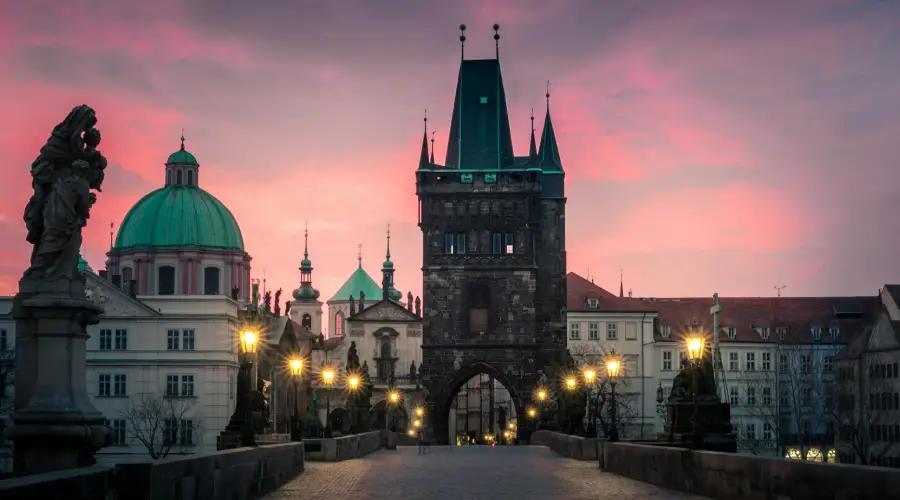
Villa Tugendhat: A Modernist Masterpiece in Brno
Vila Tugendhat is a contemporary architectural marvel in Brno, Czech Republic, and a homage to the notions of its original proprietors, Fritz and Greta Tugendhat. This celebrated residence, crafted by the acclaimed architect Ludwig Mies van der Rohe, is lauded for its cutting-edge aesthetic and imaginative material choices. The estate, finalized in 1930, acts as an epitome of the tenets of the modernist movement, adeptly blending form and purpose. Villa Tugendhat, reaching the zenith of modernist architecture, is a pioneering marvel seamlessly integrating with its surroundings through unbarred arrangements, extensive use of glass, and austere design. Its historical significance has earned it a place on the UNESCO World Heritage List, consistently captivating both authorities and aficionados with its timeless grace.
Built as a family home for German businessman and Tugendhat scion Fritz Tugendhat, the residence epitomizes his groundbreaking blueprint philosophy. Together with Mies van der Rohe, they designed a home that perfectly captured the family’s way of life and will go down in architectural history. Fritz’s wife and art enthusiast Greta Tugendhat was a major influence on the villa’s design. Her influence is discernible in the tastefully chosen décor and the creative incorporation, transforming Villa Tugendhat from a mere residence into a living exemplar of modernist sensibility. The villa’s designation as a cultural landmark is further strengthened by Greta’s dedication to artistic endeavors.
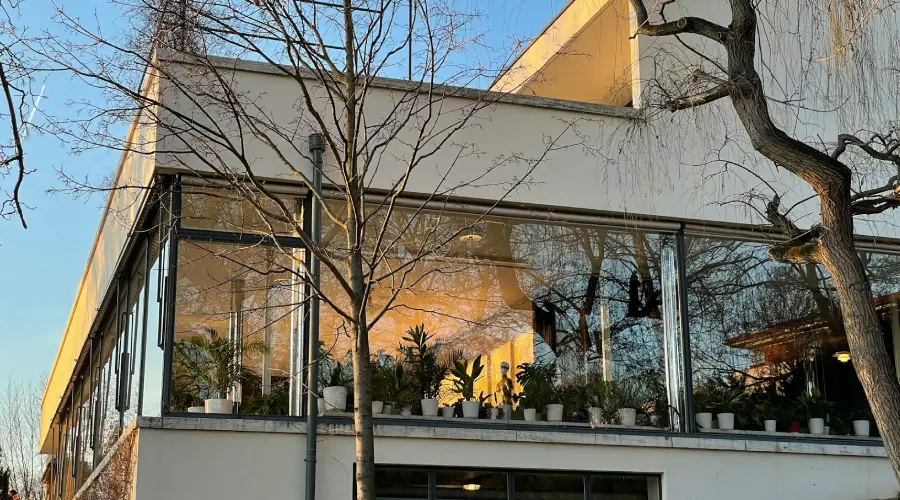
Museum Kampa: Where Art and Nature Converge on Prague’s Riverside
Situated on the picturesque Kampa Island in the center of Prague, Museum Kampa is a cultural oasis that skillfully combines modern art with the historic charm of Lesser Town. Since its founding by Meda Mládek in 2003, this location has drawn both art fans and history buffs as an outstanding exhibition space for contemporary art from Central Europe. As you explore the region tucked away at the foot of Prague Castle, the charm of the Lesser Town reveals itself. This historic quarter, with its dynamic ambiance, exquisite architecture, and cobblestone streets, provides the perfect setting for Museum Kampa. As you wander through the narrow lanes, you’ll experience a captivating fusion of modern energy emanating from the museum’s displays and the historical charm of the Lesser Town.
Housed within Museum Kampa is the vibrant Kampa Gallery Prague, featuring an extensive collection of contemporary artwork from Central Europe. Renowned artists like František Kupka and Andy Warhol are given a platform by the gallery, which is known for its intelligent installations and inventive sculptures.Against the picturesque backdrop of the Vltava River, a lively panorama of contemporary artistic expression is available to visitors with Museum Kampa tickets. Explore the distinct universe of Toyen, a well-known surrealist from Czechia, whose creations are on show at Museum Kampa. This section honors Toyen’s revolutionary contributions to the surrealism movement and provides a window into the creative process. The Toyen assortment is an impressive illustration of Museum Kampa’s commitment to preserving and displaying the opulent weave of Central European art history.
St. Nicholas Church: A Baroque Masterpiece in the Heart of Prague
Prague’s splendid St. Nicholas Church is a captivating architectural marvel that dominates the cityscape and is considered to be the pulsating heart of Central Europe. Prague, recognized for its extensive history and culture, is a testament to the enduring influence of its sacred sites, with St. Nicholas Church serving as a symbol of this cultural heritage. Grasping the significance of St. Nicholas Church aids one in comprehending Prague’s cathedrals, which are all vital components of the city’s rich spiritual and cultural legacy. Prague’s St. Nicholas Church dominates the Lesser Town skyline and is a magnificent illustration of Baroque grandeur.
A prime instance of Baroque architecture, architect Kilian Ignaz Dientzenhofer’s 18th-century masterpiece showcases lavish interiors and stunning murals. Its splendid dome and intricate stucco work accentuate its role as the epitome of Baroque architecture while offering guests a visual banquet and a reminder of centuries of worship inside its sacred confines. Prague’s cathedral assortment, which extends beyond St. Nicholas Church, is a testimony to both the city’s architectural finesse and theological diversity. Within Prague Castle, the imposing St Vitus Cathedral is a Gothic masterpiece that attests to centuries of construction.
St. George’s Basilica and the Cathedral of Saints Cyril and Methodius, both with intriguing histories, are additional contributions to the spiritual ambiance. When amalgamated, these churches narrate Prague’s artistic expression and unwavering dedication, enticing visitors to explore the spiritual core of the city.
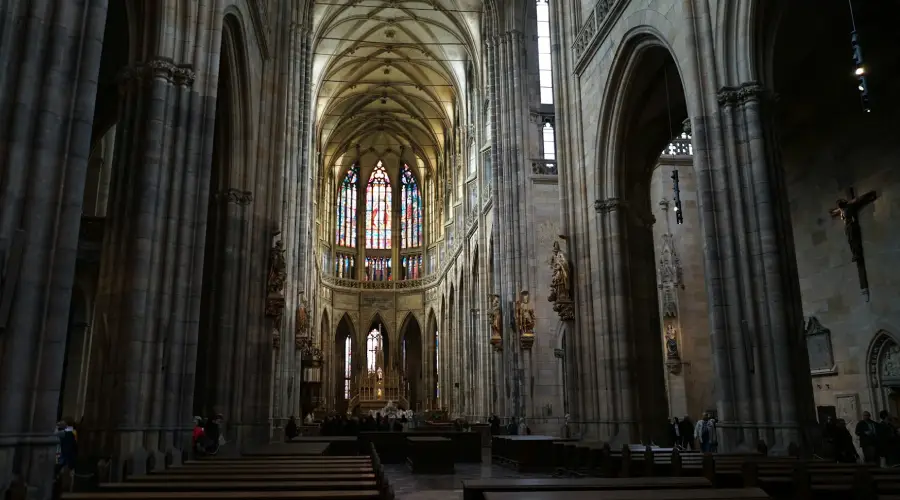
National Monument: Celebrating Czech Heritage and History
The Czech Republic boasts a plethora of historical and cultural sites, among which national monuments proudly safeguard the nation’s legacy. An example of such significance is the National Monument in Prague, situated atop Vitkov Hill. This iconic landmark pays homage to the enduring spirit of the Czech people and holds paramount historical importance. The Vitkov building at the heart of the National Monument houses a museum dedicated to pivotal periods in Czech history. This historical archive showcases artifacts, exhibits, and souvenirs, providing visitors with profound insights into the challenges and triumphs that have shaped the Czech identity. Vitkov stands as a tribute to those who fought for the freedom and independence of the country.
Vitkov Hill, historically significant for pivotal events in Czech history, was once a crucial military stronghold. Today, it has transformed into a tranquil sanctuary with beautifully designed gardens, inviting guests to contemplate the profound historical events that unfolded on this sacred site. The ascent up Vitkov Hill symbolizes both a literal and metaphorical journey through the annals of Czech history. Situated atop Vitkov Hill, the National Monument offers unparalleled views of Prague. The expansive panorama showcases the architectural marvels of the city, including the iconic Prague Castle and the meandering Vltava River. Admiring Prague’s skyline from this vantage point prompts reflection on the historical narratives embedded within its boundaries. These Prague landmarks serve as a constant reminder that the coexistence of modernity and history uniquely captures the essence of Prague and the Czech Republic.
Lennon Wall: A Living Mural of Peace and Expression in Prague
Situated at the heart of Prague, the Lennon Wall stands as a vibrant testament to the enduring impact of love, peace, and artistic expression. This iconic monument symbolizes optimism and unity, originating from an unplanned burst of creativity during a tumultuous period. The Lennon Wall story unfolded in the 1980s when a group of dissident young Czechs embarked on painting graffiti and lyrics in central Prague, inspired by the music of John Lennon. Beyond just celebrating Lennon’s messages of freedom and peace, this act served as a protest against the oppressive Communist dictatorship, evolving over time into a dynamic canvas enriched by contributions from artists and visitors worldwide.
Adjacent to the Charles Bridge, the Lennon Wall has become an integral part of Prague’s cultural landscape, showcasing the ongoing potency of artistic resistance. Its kaleidoscopic display of colors and messages attracts both locals and a myriad of visitors, serving as a living embodiment of the city’s essence and a perpetual reminder of artistic expression triumphing over adversity. Functioning as an unauthorized memorial to John Lennon, the Lennon Wall transcends mere graffiti, transforming into a shrine adorned with flowers, candles, and keepsakes. This evolution illustrates the enduring impact of Lennon’s ideas across generations. Beyond its historical significance, the wall’s memorial aspect turns it into a destination for those seeking solace and inspiration in the timeless principles championed by John Lennon.
